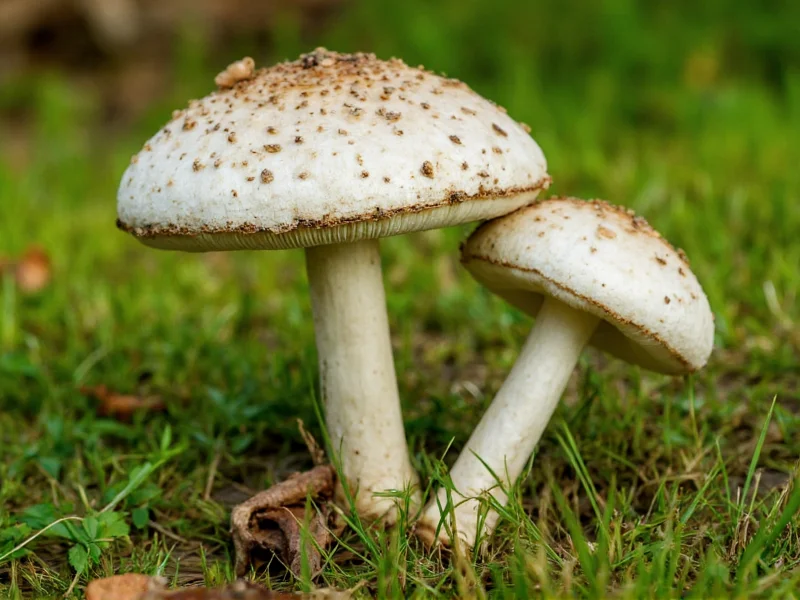Understanding the distinction between mushrooms and herbs prevents common misconceptions in cooking and natural wellness practices. While both contribute significantly to global cuisines and traditional medicine systems, their biological classifications differ fundamentally. Mushrooms represent one of nature's most efficient decomposers, thriving as saprophytes or symbionts, whereas herbs complete their life cycle within one or two growing seasons as part of the plant kingdom.
When exploring mushroom varieties used like herbs, we enter a fascinating intersection of mycology and culinary science. Chefs and herbalists increasingly recognize specific fungi that deliver herb-like functionality without botanical classification. This knowledge proves particularly valuable for individuals seeking plant-based alternatives or managing herb allergies while maintaining complex flavor profiles in dishes.
Biological Distinctions Between Fungi and Plants
The confusion between mushrooms and herbs often stems from their shared presence in kitchen spice racks and apothecary shelves. Scientifically, mushrooms lack chlorophyll, cellulose, and vascular systems that define plant-based herbs. Instead, fungi process nutrients through enzymatic decomposition—a fundamentally different biological mechanism. This distinction becomes crucial when considering medicinal mushroom properties versus herbal remedies, as their active compounds interact differently with human physiology.
Culinary Mushroom Varieties with Herb-Like Applications
Certain mushrooms deliver flavor compounds remarkably similar to traditional herbs, making them valuable substitutes in various culinary contexts. These culinary mushroom alternatives to herbs provide unique umami depth while serving functional roles typically filled by aromatic plants.
| Mushroom Variety | Herb Equivalent | Primary Flavor Compounds | Culinary Applications |
|---|---|---|---|
| Shiitake | Thyme/Oregano | Lenthionine | Broths, sauces, vegetarian dishes requiring earthy notes |
| Maitake | Rosemary | 1-Octen-3-ol | Roasted vegetable preparations, meat alternatives |
| Lion's Mane | Chives | Hericenones | Seafood substitutes, creamy sauces, egg dishes |
| Porcini | Sage | 3-Octanol | Pastas, risottos, mushroom-based gravies |
Medicinal Mushroom Uses Compared to Herbal Medicine
The realm of adaptogenic mushrooms versus herbal adaptogens reveals fascinating parallels and distinctions. While both categories contain compounds that help the body resist stressors, their mechanisms differ significantly. Reishi mushrooms (Ganoderma lucidum) contain triterpenes that modulate immune response differently than the alkaloids found in traditional herbs like ashwagandha.
Research published in the Journal of Ethnopharmacology demonstrates that turkey tail mushrooms (Trametes versicolor) provide polysaccharopeptides with immunomodulatory effects distinct from echinacea's alkylamides. This scientific understanding helps practitioners make informed decisions when selecting between mushroom-based wellness solutions and herbal remedies.
Practical Integration in Daily Wellness
For those exploring how to use mushrooms like herbs in cooking, timing proves critical. Unlike herbs whose volatile oils release immediately when heated, mushroom compounds often require longer simmering to unlock their full flavor potential. Dried shiitakes, for instance, should steep in warm liquid for 20 minutes before use—a process analogous to making herbal infusions but with different temperature requirements.
When creating mushroom tea as an herbal alternative, note that hot water extraction works differently for fungi than plants. Lion's mane requires near-boiling temperatures for optimal hericenone release, while delicate herbs like chamomile lose beneficial compounds above 85°C. This knowledge helps home practitioners maximize the benefits of medicinal mushroom preparations without compromising efficacy.
Safety Considerations and Quality Assessment
Proper identification remains paramount when exploring wild mushroom varieties similar to herbs. Unlike cultivated herbs where misidentification rarely proves dangerous, mushroom foraging carries significant risks. The FDA recommends sourcing medicinal mushrooms from certified organic suppliers due to their bioaccumulation properties—they absorb both beneficial compounds and environmental contaminants from their growth medium.
When evaluating quality indicators for culinary mushrooms, examine texture and aroma rather than color alone. Fresh shiitakes should feel slightly springy with a pronounced earthy scent, while dried varieties must show no signs of moisture retention that could indicate mold development—a critical distinction from dried herbs which tolerate higher moisture levels.
Conclusion
Understanding that mushrooms aren't herbs but can function similarly in specific applications empowers more informed culinary and wellness decisions. The growing body of research on mushroom compounds versus herbal phytochemicals continues to reveal nuanced differences in their interactions with human biology. By respecting both the distinctions and synergies between these natural resources, we can make more precise choices in our cooking and wellness routines without falling prey to common classification errors.
Frequently Asked Questions
Can mushrooms replace herbs in cooking?
Yes, specific mushroom varieties can effectively replace herbs in many culinary applications. Shiitake mushrooms provide earthy notes similar to thyme in sauces and broths, while lion's mane offers a delicate flavor comparable to chives in creamy dishes. The key difference lies in preparation—mushrooms often require longer cooking times to release their full flavor potential compared to herbs added at the end of cooking.
Which mushrooms work best as herbal substitutes in tea?
Reishi and chaga mushrooms serve as excellent herbal tea substitutes with distinct benefits. Reishi provides a slightly bitter, woody flavor similar to certain medicinal herbs and requires simmering for at least 20 minutes to extract active compounds. Chaga offers a vanilla-like note reminiscent of some herbal blends. Unlike traditional herbal teas, mushroom teas often benefit from adding black pepper to enhance absorption of active compounds.
Why can't mushrooms be classified as herbs?
Mushrooms belong to the fungi kingdom, fundamentally different from plant-based herbs. They lack chlorophyll, cellulose cell walls, and vascular systems that define herbs as flowering plants. Fungi absorb nutrients through decomposition rather than photosynthesis, representing a separate biological classification with distinct cellular structures and reproductive mechanisms that preclude classification as herbs.
Are medicinal mushrooms safer than herbal supplements?
Neither category is universally safer—both require proper sourcing and dosage. Medicinal mushrooms like turkey tail generally show fewer drug interactions than potent herbs like St. John's Wort. However, mushrooms can accumulate environmental contaminants more readily than herbs. The FDA recommends consulting healthcare providers before using either category for therapeutic purposes, especially when managing chronic conditions or taking prescription medications.











 浙公网安备
33010002000092号
浙公网安备
33010002000092号 浙B2-20120091-4
浙B2-20120091-4